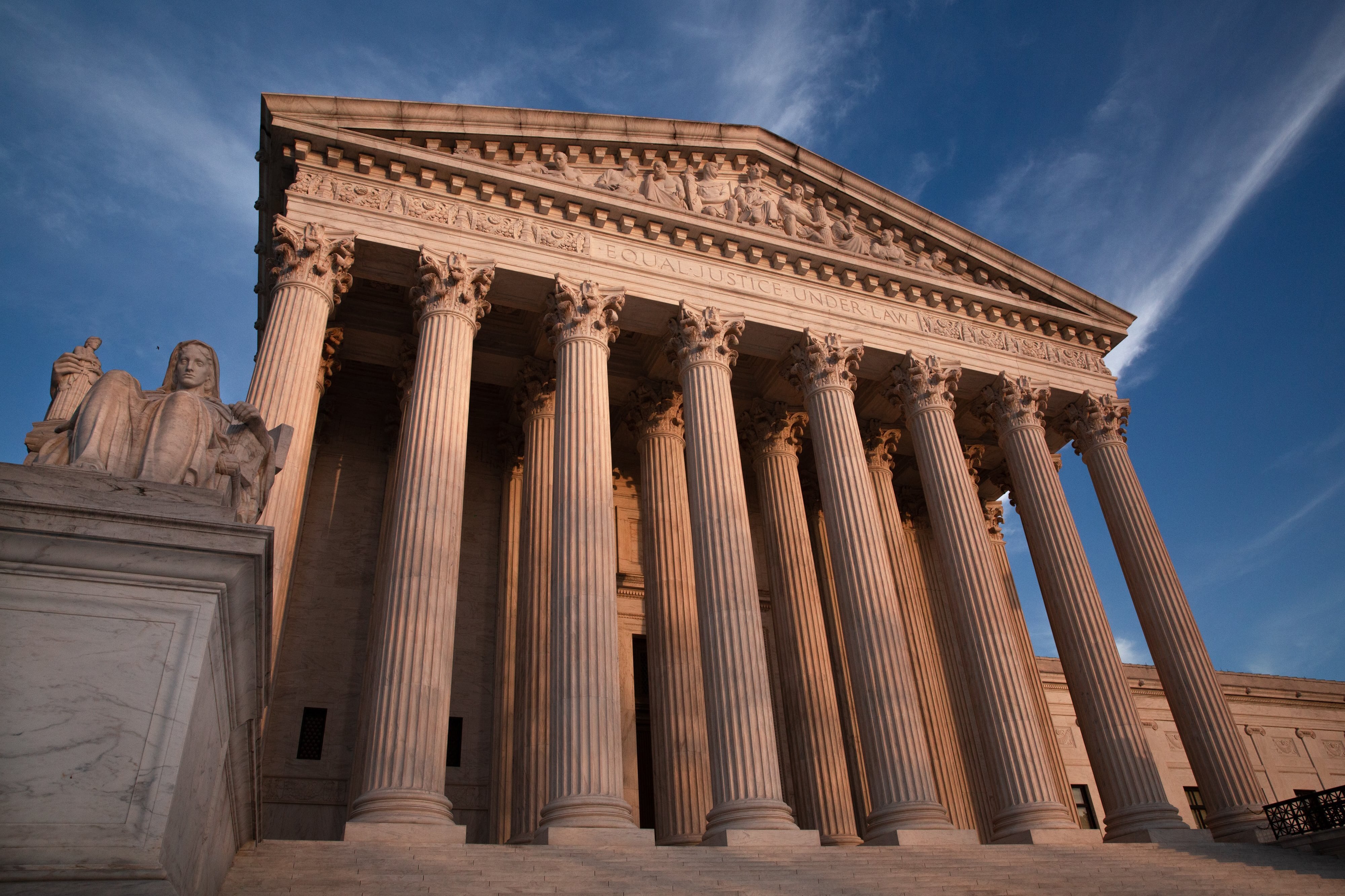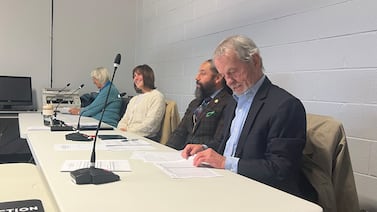Votebeat is a nonprofit news organization reporting on voting access and election administration across the U.S. Sign up for Votebeat Texas’ free newsletter here.
This story was first published byThe Texas Tribune,a nonprofit, nonpartisan media organization that informs Texans — and engages with them — about public policy, politics, government and statewide issues.
After a panel of three federal judges ruled Tuesday that Texas cannot use its new congressional map for next year’s election, all eyes turned to the U.S. Supreme Court, which will decide whether to allow the ruling to stand.
The judges ordered Texas to instead use the map it drew in 2021, which favors Republicans but not as aggressively as the 2025 map.
What happens next will likely unroll in two key steps. First, the state is expected to ask the U.S. Supreme Court to temporarily pause the ruling, which would allow Texas to use the more recent map while the appeal plays out.
Then, they will ask the high court to rule on the merits of the case — did Texas disenfranchise voters of color when redrawing its maps this year?
With the Dec. 8 filing deadline approaching quickly, an initial short-term pause could still have significant implications for which map Texas holds its 2026 elections under.
The request will go first to Justice Samuel Alito, a conservative member of the court who handles emergency petitions from Texas, but it would likely take a majority of the court to decide to pause the court’s ruling.
Whatever happens, it will need to happen quickly. Texas’ 30-day candidate filing period began on Nov. 8, meaning candidates have less than three weeks to decide what seats they are running for. To do so, they need to know whether the state will be using the map drawn over the summer, or the map drawn in 2021.
During the nine-day hearing in El Paso, the state tried to argue that there was not enough time for the court to overturn the maps, an argument the panel rejected.
“The Legislature — not the Court — redrew Texas’s congressional map weeks before precinct-chair and candidate-filing periods opened,” they wrote in the ruling. “The State chose to ‘toy with its election laws close to’ the 2026 congressional election, though that is certainly its prerogative.”
Pressing Pause
Most federal lawsuits go before a single district judge and are appealed to a circuit court. That ruling can then be appealed to the Supreme Court, where the justices decide whether or not they want to hear the case.
Redistricting cases are different. They start before a three-judge panel, made up of two district judges and one circuit judge, and are appealed directly to the Supreme Court. The court must respond to the appeal, even if it just affirms or rejects outright.
In 2022, after a three-judge panel found that Alabama’s map violated the Voting Rights Act, the Supreme Court temporarily allowed the maps to remain in effect while they considered an appeal.
More than a year later, the Supreme Court ruled in the appeal that the initial findings were correct: Alabama’s map was discriminatory and should not be used. The state redrew its maps, which were again rejected by a court as discriminatory; this time, the Supreme Court did not intervene.
That same year, after a federal judge and appellate court ruled that Louisiana’s map violated the Voting Rights Act, the Supreme Court did not pause that ruling while it considered an appeal. The map remained on ice and Louisiana redrew its lines to add additional majority-Black districts.
That redraw prompted a new lawsuit, in which the Supreme Court did temporarily block a lower-court ruling. That case has since evolved into a venue in which the conservative justices seem poised to undermine key provisions of the Voting Rights Act. The Supreme Court heard oral arguments in that case last month, and a ruling is expected this summer.
Justin Levitt, a law professor at Loyola Law School, said the justices have become increasingly reliant on emergency orders in recent years, and less communicative about why they grant some and not others.
“What the Supreme Court decides to do with all this is a profoundly open question,” he said. “I wish that it would clarify a lot about its jurisprudence of when it steps in and presses pause.”
Appeal on the merits
After the short-term question about granting a stay comes the long-term question of whether Texas likely engaged in racial gerrymandering in drawing the 2025 map. Every time Texas has redrawn its maps since the creation of the Voting Rights Act in the 1960s, at least one of its proposals has been shot down for being racially discriminatory.
In 2012, a Texas district court rejected Texas’ proposed maps and submitted its own; the Supreme Court struck that ruling, and the court drew a new map that was more similar to Texas’ original proposal. While this was going on, Texas election officials moved the March primary to April and reopened candidate filing for an additional day.
The Supreme Court ultimately sided with Texas — six years later — and upheld the bulk of the maps.
The Legislature’s next stab at redistricting, in 2021, is still under legal review, before the same three-judge panel that just ruled on the 2025 maps. The month-long trial over those maps was held in El Paso just weeks before the Legislature decided to redraw the maps.
Tuesday’s ruling from the three-judge panel is preliminary; it says only that the plaintiffs are likely to prevail after a full trial, and that they will face irreparable harm if this relief isn’t granted.
While the state argued repeatedly at the nine-day hearing that the redraw was done only to add additional Republican seats, the judges pointed to numerous instances where lawmakers relied on racial data to justify their actions.
“It wasn’t enough for the map to merely improve Republican performance; it also needed to convert as many coalition districts to single-race-majority districts as possible,” Judge Jeffrey Brown, a Trump appointee, wrote in his ruling. “The bill’s main proponents purposefully manipulated the districts’ racial numbers to make the map more palatable. That’s racial gerrymandering.”
In the 160-page ruling, the judges lay out extensive evidence that Gov. Greg Abbott and state lawmakers relied on racial motivations in redrawing coalition districts to appease the Department of Justice.
They also unpack the evidence to the contrary, noting that the 2025 map scores better than the 2021 maps on certain redistricting metrics, like compactness,, and pointing out that the plaintiffs have failed to provide the court with a map that produces the same political outcome without the same racial influences.
Neither of these issues are fatal to the plaintiffs’ claims, the judges conclude, and without an injunction, voters “will be forced to be represented in Congress based on likely unconstitutional racial classifications for at least two years.”





